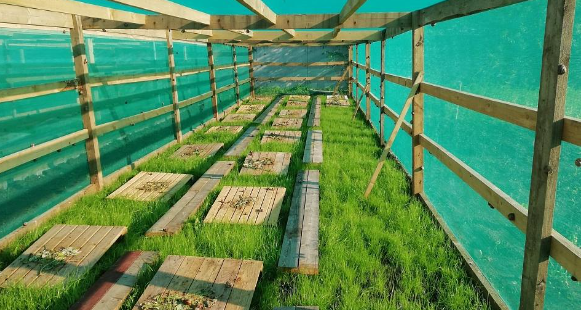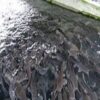- このトピックは空です。
- 投稿者投稿
- 3月 22, 2025 6:30 am #600214

Snail farming, particularly in tropical climates, presents a unique set of challenges and opportunities. The design of a snail house is paramount to maximizing yield and ensuring environmental sustainability.
In regions characterized by high temperatures and humidity, careful consideration must be given to the materials, ventilation, and overall structure to create an optimal environment for snail growth.
This article explores the essential aspects of snail house design tailored for tropical climates, focusing on maximizing yield while minimizing environmental impact.
1. Temperature Regulation and Shading
Tropical climates often experience intense heat, which can be detrimental to snail health. Snails are poikilothermic, meaning their body temperature is regulated by the environment. Therefore, the snail house must be designed to maintain a stable and cool temperature.
Effective shading is crucial. Materials like shade netting, thatch, or reflective roofing can help reduce direct sunlight and prevent overheating. Proper ventilation is also essential for dissipating heat and maintaining a comfortable temperature range.
The orientation of the snail house should consider prevailing wind patterns to maximize natural airflow.
2. Humidity Management and Ventilation
High humidity is generally beneficial for snails, but excessive moisture can lead to fungal infections and other health problems. The snail house design should strike a balance between maintaining adequate humidity and ensuring proper ventilation. Ventilation can be achieved through strategically placed openings, adjustable vents, or the use of fans. The materials used in construction can also influence humidity levels. Materials that retain moisture, like clay or thatch, can help maintain a humid environment. Regular spraying or misting may be necessary to supplement humidity levels, especially during dry periods.
3. Soil Composition and Drainage
The soil within the snail house is a critical factor in snail growth and reproduction. Tropical climates often experience heavy rainfall, which can lead to waterlogging and soil erosion. The soil should be well-draining to prevent water accumulation and maintain a suitable moisture level.
A mixture of loamy soil, compost, and sand can provide a balanced substrate. The snail house floor should be slightly sloped to facilitate drainage. Drainage channels or perforated pipes can be incorporated into the design to remove excess water.
4. Protection from Predators and Pests
Tropical climates harbor a diverse range of predators and pests that can pose a threat to snail populations. The snail house must be designed to provide robust protection from these threats. Wire mesh barriers, rodent-proof walls, and secure entrances are essential.
The materials used in construction should be sturdy and durable, preventing predators from accessing the snail population. Regular monitoring and pest control measures are necessary to maintain a safe environment. Consideration of local predator populations is vital when choosing appropriate materials and constructing the enclosure.
5. Sustainable Materials and Construction Practices
Environmental sustainability is a crucial consideration in snail house design. Locally sourced and sustainable materials should be prioritized. Natural materials like bamboo, thatch, and clay are readily available in many tropical regions and offer excellent insulation and ventilation properties. Utilizing recycled materials and minimizing waste can further reduce the environmental footprint of the snail farm. Incorporating rainwater harvesting systems and composting facilities can enhance sustainability and reduce reliance on external resources.
Optimizing snail house design for maximum yield and environmental sustainability in tropical climates requires a holistic approach. By carefully considering temperature regulation, humidity management, soil composition, predator protection, and sustainable materials, snail farmers can create a thriving environment for their snails.
A well-designed snail house not only enhances snail productivity but also contributes to the long-term sustainability of the snail farming enterprise in tropical regions.
Read Also: The Impact of Snail House Materials and Construction on Snail Growth, Health, and Disease Prevention
- 投稿者投稿
- このトピックに返信するにはログインが必要です。






